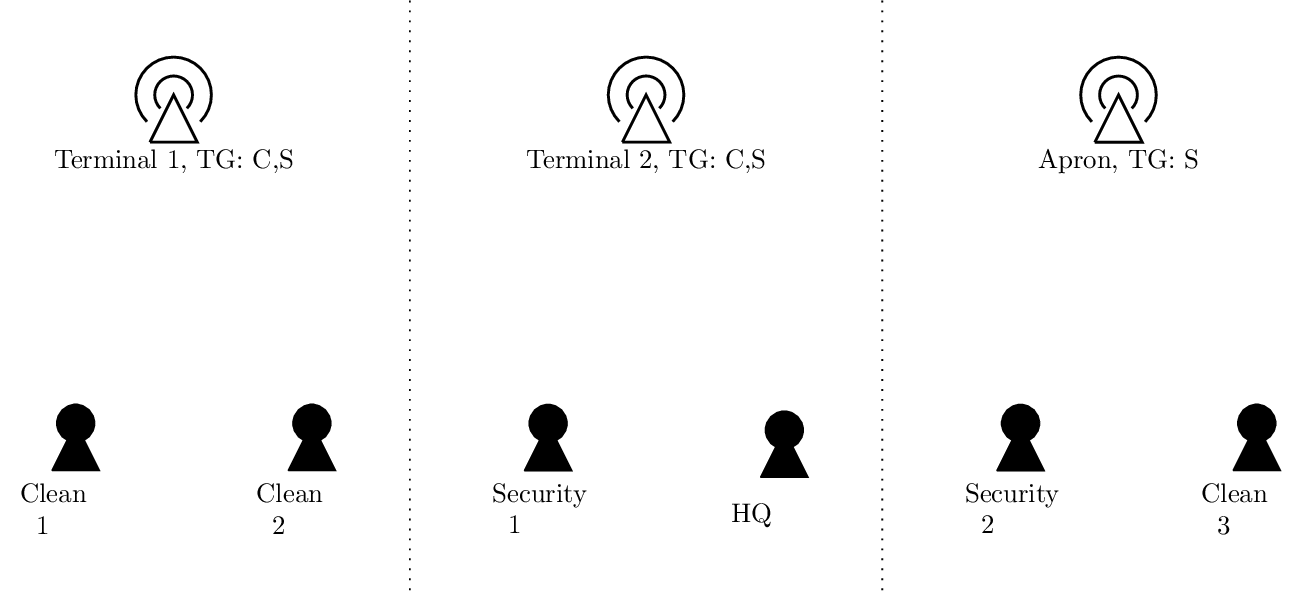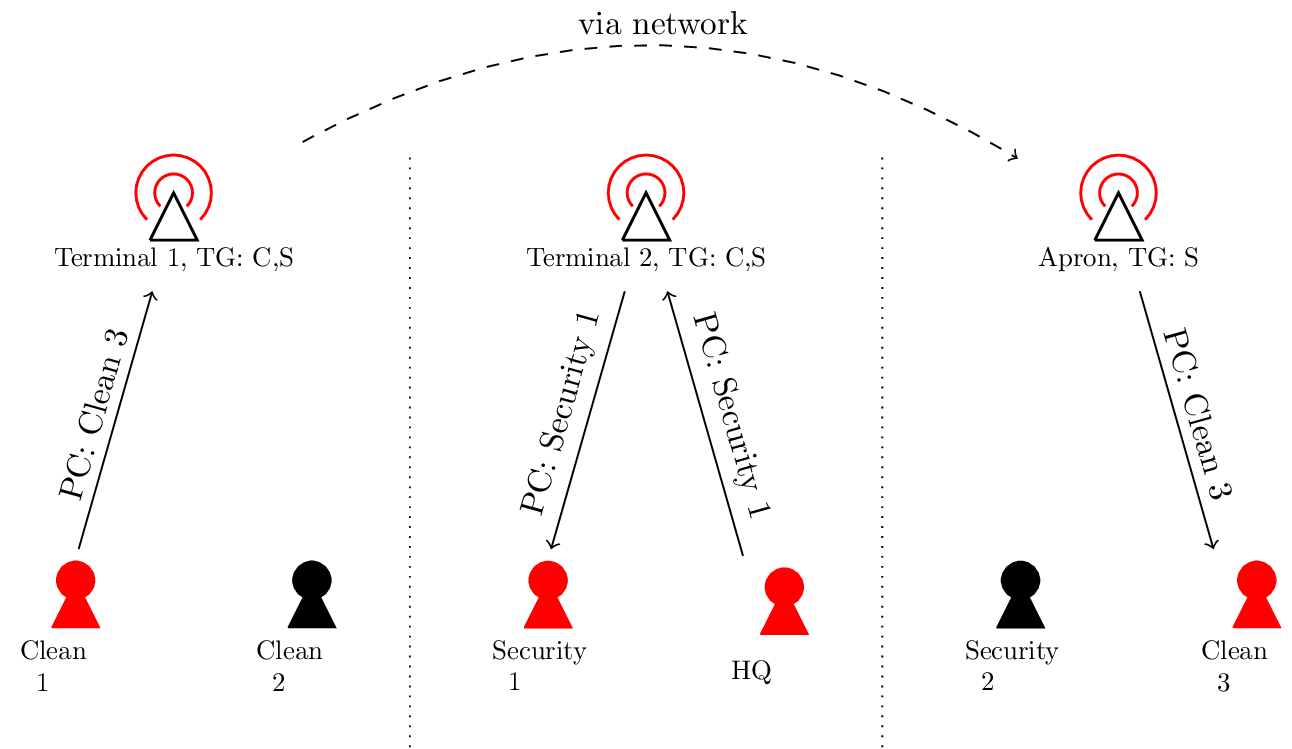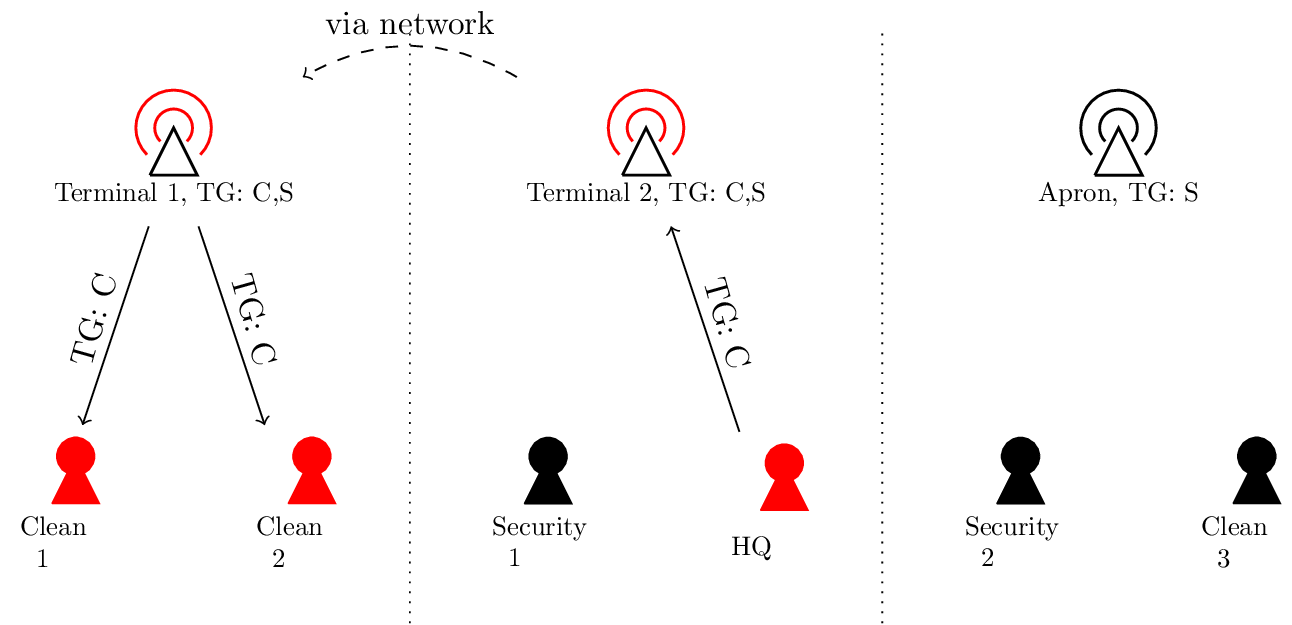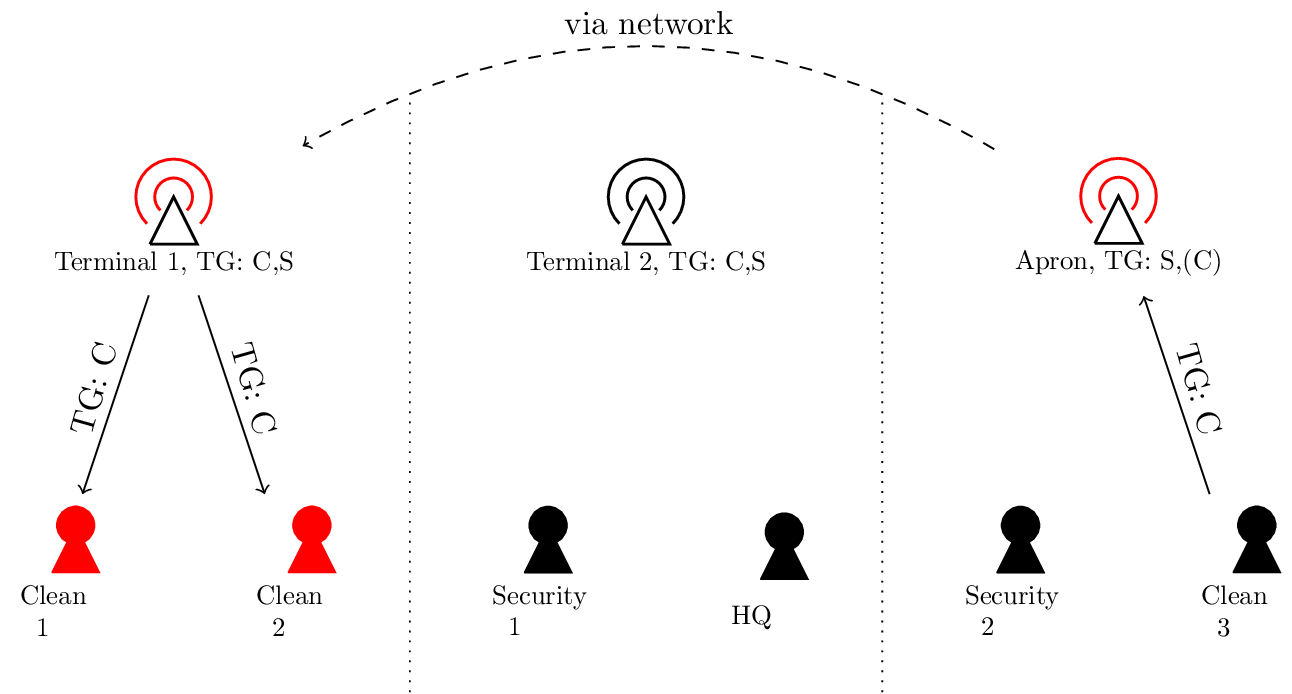DMR (digital mobile radio) is a digital radio standard to transmit speech and data. That is, the speech is not directly modulated on the carrier but is first digitalized and compressed using a lossy compression codec (VOCODER). The compressed speech is then transmitted as data packets. The latter allows to attach meta-information to the data packet like source and destination of the packet.
DMR was designed to be the digital replacement for analog trunking networks in commercial applications. A classic example for such a commercial application of DMR would be a civil air port. With this, I do not mean the air-traffic radio but all the communication of the ground staff in and around the actual air port buildings.
At such an imaginary air port, there is a huge staff with a wide variety of tasks. For example (without any claim of completeness):
The cleaning crew,
technicians,
security staff,
apron staff for refueling, luggage and catering,
the fire brigade and
the headquarters.
All these people carry a radio and should be able to
Directly call the headquarters. All staff should be able to call the headquarters directly.
Direct communication between members of the same group, without interfering with other groups. For example, the cleaning staff should be able to communicate with each other, without interfering with the fire brigade.
Each person should be able to call a complete group. For example, the headquarters may call the entire fire brigade or one member of the security staff may call the entire security for help.
An air port, however, is a rather large area. Consequently, not all staff members are able to reach all others. Therefore, some repeaters must be installed to cover the entire air port including all interiors.
If you compare this scenario with the classic FM repeater networks (see the section called “Basics: Repeater operations”), it gets clear that is hard to implement these concepts using analog FM repeaters. Especially, if several repeaters are connected though a network. In this case, a single call on one repeater may block the entire network[3].
Certainly, it would be much better if only those repeaters get activated that are actually required for the communication between two parties. Then, the remaining repeaters are still available for the rest of the staff. This routing, however, should happen automatically. An operator may not know, which repeater to use to reach a particular person.
DMR was designed to implements such complex communication networks without requiring from every participant to have detailed knowledge about the structure of the network. That is, the knowledge about where every repeater is installed and which participants are reachable on which repeater.
Note
DMR is more similar to a phone network that to classic FM repeater networks.
Speaking of phone networks: Each participant and thus his/her radio is uniquely identified by a number. The DMR-ID. This is a number between 1 and 16777215. And like for any other phone network, each participant may call any other directly using this number. This call is called Private Call.
And there are groups. Each of these so-called Talk Groups is also assigned a unique number. A talk group can be used to group all staff with a specific task (e.g., the security, fire brigade, etc.). It is then possible to reach all members of this group at once, by performing a Group Call to that talk group. The network, however, does not know which participant is member of which group. Consequently, the radio of the participant needs to know which group calls to accept and which to ignore.
Note
This point is important to remember: The DMR network does not know which participant is member of which group. The radio needs to be configured to react on specific group calls.
There are 3 cleaning staff, two security and one headquarters. To cover the entire area, three repeaters are required. One in terminal 1, one in Terminal 2 and one on the apron.
Example 1.4, “Simplified air-port network” is a simplified air port network (in reality, it is much larger and way more complex). Consider the situation, where a cleaning stuff 1 & 3 want to communicate. At the same time, the headquarters want to talk to security 1. In an simple analog network, the call between cleaning 1 & 3 would block the entire network and therefore the call between the headquarters and security 1.
Two Simultaneous private calls in the example network between cleaning 1 & 3 as well as between headquarters and security 1.
Private calls in DMR networks only use those repeaters, that are actually required to establish the communication. This is shown in Example 1.5, “Simultaneous calls”: Cleaning 1 starts a private call to cleaning 3. As the DMR network knows that cleaning 3 was last active on the apron repeater, this call gets routed only though repeaters terminal 1 and apron. The repeater in terminal 2, however, is not affected. Consequently, this repeater remains available for the call between the headquarters and security 1.
Note
The network only knows at which repeater each participant was last active. The network will therefore try to establish a connection though that repeater to the participant.
During the call between cleaning 1 & 3, the repeaters in terminal 1 and apron are blocked. This means, that the headquarters may not be able to reach cleaning 2 and security 2 immediately. This sounds worse than it actually is. In contrast to classic phone networks, a direct call is considered interrupted, once the calling participant releases the PTT button. To this end, the headquarters may use the pauses between calls to reach the other participants.
In the next Example 1.6, “Temporary subscription of talk groups.”, the headquarters want to reach all cleaning staff. Therefore, they start a group call to the talk group “cleaning” (C for “cleaning” and S for “security”). With this call, it can reach cleaning 1 & 2 immediately. However, cleaning 3 does not receive that call.
This is due to the fact, that the DMR network does not know which participants are members of which groups. As the cleaning crew is usually not on the apron, the apron repeater has not subscribed the talk group “cleaning”. Therefore, it does not forward group calls to that talk group.
To remain reachable for group calls, cleaning 3 needs to temporarily subscribe the apron repeater to the “cleaning” talk group. This can be done by starting a group call to that talk group on the apron repeater. Then the repeater will temporarily subscribe to that talk group for a limited amount of time (usually between 10-30min). During that time, the repeater will forward group calls to that talk group and cleaning 3 remains reachable via that repeater.
This temporary subscription will be renewed every time a participant starts a group call to that talk group on this repeater.
With these examples, the most basic terms of DMR (DMR-ID, talk group, private and group calls as well as talk group subscriptions where introduced and explained on an example network. The following sections will concern the use DMR in ham radio.
[3] There are means to implement this concept on analog repeater networks using tone-signaling techniques (e.g., DTMF, five-tone etc.).




